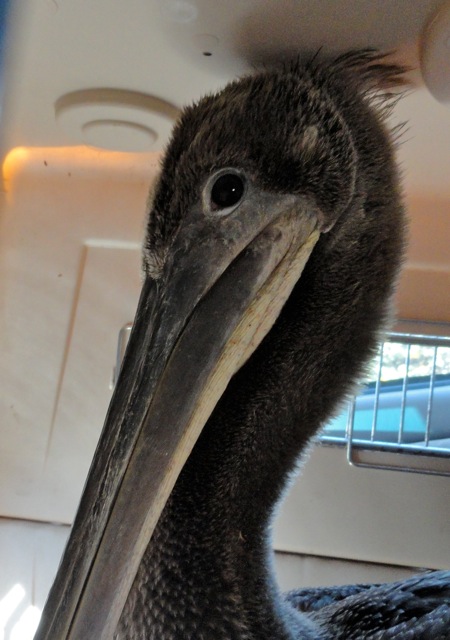Baby California brown pelicans (Pelecanus occidentalis californicus), have recently turned up starving and in weak condition along the California coast. Distinguished from adults and older juveniles by their white bellies, yellowish beaks, and creamy yellow color on their legs, these "hatch year" youngsters hail from nesting colonies offshore. Since their population dropped in the mid-twentieth century from the effects of DDT, California's brown pelican nesting colonies are only found in the Channel Islands off of Los Angeles. As a result, these babies have traveled a long way by the time we see them.

Note the pale yellow color of this young pelican's legs and feet.
Keep an eye out for weak baby pelicans and call our hotline for the nearest rescue center: 1-866-WILD-911
Keep an eye out for weak baby pelicans and call our hotline for the nearest rescue center: 1-866-WILD-911
Yesterday, WildRescue responded to a call by a fisherman about one of these "hatch years". When we arrived at the scene, this baby pelican was being harassed by a group of picture-taking beach-goers who had no idea there was anything wrong with the animal. As empathetic animals, our instinct is usually to help when we encounter other beings in trouble, yet only the fisherman was able to "hear" that help was what the baby needed. Was he more familiar with the beach, the birds and their normal behavior, or was it that he was the only one listening?
Contributing writer, Max Salamander

This newly fledged pelican is headed to International Bird Rescue in Fairfield for care. Nearly a 300 mile roundtrip from the Monterey Bay area. Volunteer transporters are always needed to do all or part of these frequent hauls.
UPDATE:
The pelican rescued off of Santa Cruz on May 9th is still receiving rehabilitative care at International Bird Rescue in Fairfield. We will keep you posted on her progress.
